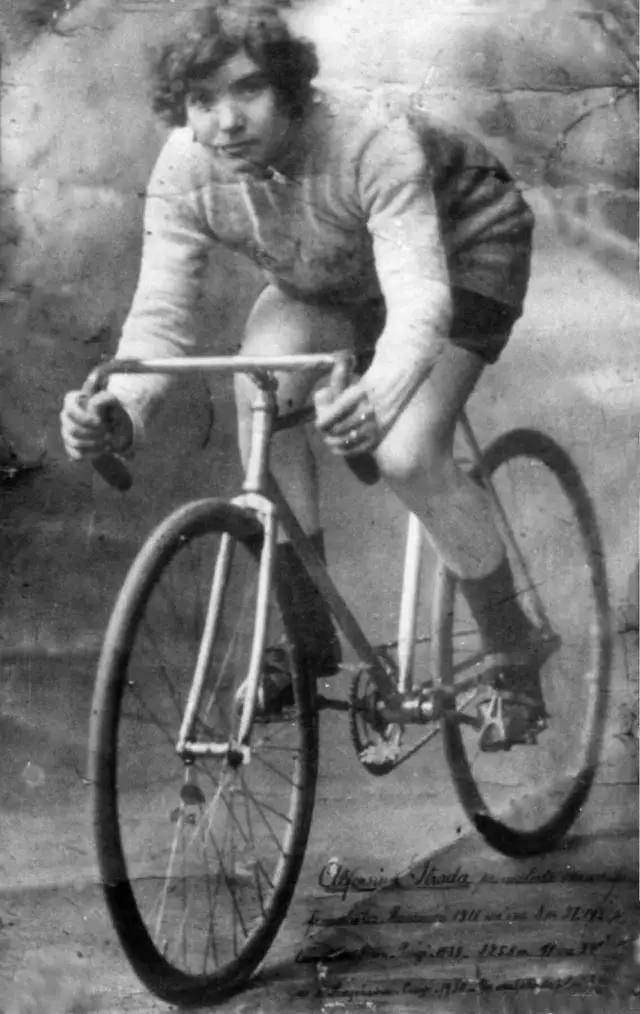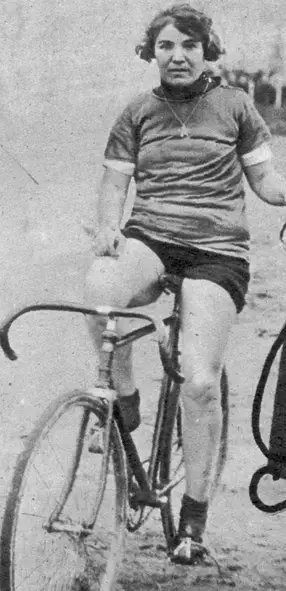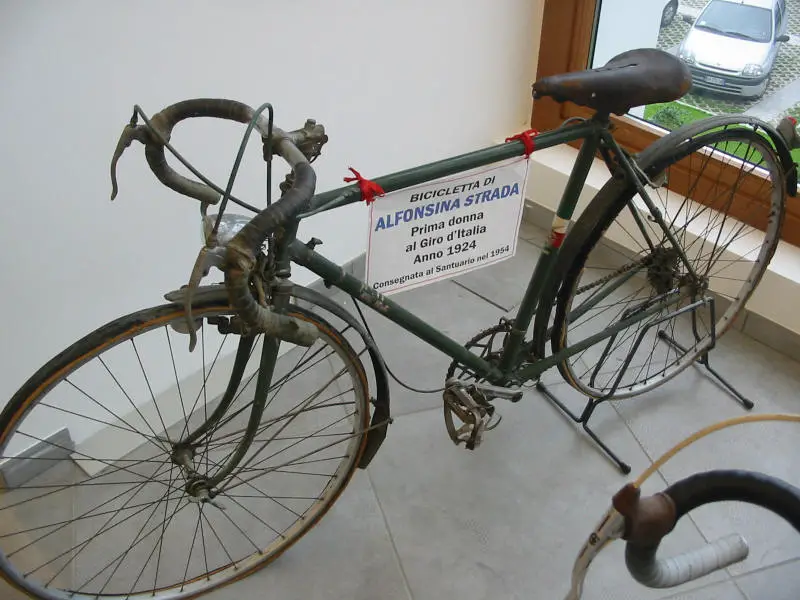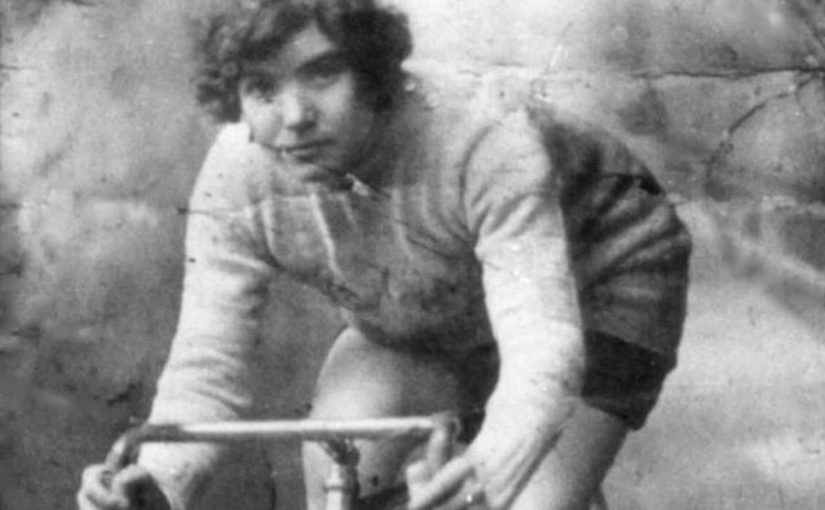1924 Giro d’Italia was very extraordinary. Because, Alfonsina Strada participated in that year’s Giro d’Italia, and became the only woman to have ridden one of cycling’s three 3-week grand tours.
Who is Alfonsina Strada?

Born Alfonsina Morini at Castelfranco Emilia, near Modena, on 16 March 1891. She was the daughter of a peasant family. Her father was a day laborer, and her mother a wet nurse. Her living conditions as a child may have been romanticized by reporters and not denied as her legend grew.
One account says her house was a windowless shack through which chickens ran; another says she was one of 24 living there. Further reports speak of her family considering her passion for cycling to have been the work of the devil, that it had the evil eye. Some reports say that she was one of eight children and others that she was one of 10, with eight brothers, still others that she had 10 brothers.
Much of Morini’s early life should be read with this in mind.
The legend says that Morini grew up a tomboy, playing with her brothers and their friends and riding her father’s bicycle until, when she was 10, her father paid for one of her own by exchanging it for chickens. Romantic accounts say that villagers crossed themselves as she rode past, dressed and behaving more like a boy than a girl. Her mother is said to have pressed her to become a seamstress.
She rode her first race at about 13, winning a live pig. She won nearly all the girls’ races she entered and many of the boys’ events. Her reputation brought an invitation to ride the Grand Prix of St Petersburg in Russia in 1909. She was such a success that Czarina Alexandra⋅wanted her husband, Tsar Nicholas II of Russia, to give her a gold medal.
In 1911 she went to Moncalieri, now in the southern suburbs of Turin, and set an hour record of 37.192 km. The status of the record is uncertain. It appears to have stood since 1905 but some reports say that Morini wasn’t credited with her distance because her ride had been considered unladylike. Since that wouldn’t have been an issue had she improved simply the women’s record, there’s a suggestion that she may also have broken a male record, perhaps a regional one, and it was that which she was denied.
Her distance stood for 26 years.
Alfonsina Strada won 36 races against men and became the friend of riders such as Costante Girardengo. She raced at Bologna and Paris and twice rode the Giro di Lombardia at a time when it was open to all. She finished 32nd and last in the 1917 race, an hour and 34 minutes behind the Belgian Philippe Thys. She completed the 204 km course in 8h 32m. She rode again in 1918 and finished 21st, ahead of several men.
At 24 in 1915, Morini married Luigi Strada, a metal plater, and engraver, who was also a rider and racer. He gave her a new racing bike with dropped bars as a present. The couple moved to Milan, where Alfonsina rode on the velodrome as Luigi acted as her trainer.
How Alfonsina Strada entered the 1924 Giro d’Italia?
It is weird but there are two different stories about how Alfonsina Strada participated in the 1924 Giro d’Italia.
The first story
According to a common legend, she signed up as Alfonsin Strada, entry number 72 was granted to her. Using her husband’s last name and her first name less the “a” on the end, it appeared that she was a man.
You can read this story even on Wikipedia, but as we will see below, Alfonsina Strada was very famous in these years, and it is unlikely that the similarity of the names went unnoticed.
The second story
Herbie Sykes tells another story in his great book “Maglia Rosa – Triumph and tragedy at Giro d’Italia“: Because the economy in Italy was depressed, there was serious doubt that the Giro d’Italia would happen. Most of the major sponsors were holding back. As a result, few riders signed up for the annual race, the big names including Costante Girardengo, Ottavio Bottecchia (he won the Tour de France in that year), Gaetano Belloni, and Giovanni Brunero didn’t go to the start line.
The top riders demanded money from their teams to race the Giro and the teams, in turn, demanded start money for the Giro. The Giro, wanting to strangle this baby in its crib, firmly said no to the demand for start money and so the riders refused to ride.
But there were still very well-regarded riders, including Bartolomeo Aymo, Federico Gay, and Giuseppe Enrici. According to Sykes, in the absence of the big stars, La Gazzetta Dello Sport, organizer of the Giro d’Italia, cleverly allowed a powerful 32-year-old Alfonsina Strada, Italy’s best female rider, to compete in the Giro.
Sykes claims that the famous legend saying Alfonsina Strada joined the Giro under a false (male) name was unsubstantiated, and probably he is right. Sykes writes “her presence would ensure that the race captured the public imagination. Strada portrayed by the Gazzetta as the “Darling of the Giro”, guaranteed massive interest in the race, excellent sales for the paper, and huge spectator numbers for the sponsors.”
Armando Cougnet of La Gazzetta dello Sport, the director of the Giro d’Italia, “christened it the ‘Giro of renewal’, and pointedly devised a slogan: ‘It is the Giro that makes the rider, not the other way round.'” He was crushing victor in the publicity war with the bike manufacturers (the only sponsors of the early grand tours).

Stage 1 to Genoa was won by Bartolomeo Aymo, she lost a lot of time but finished well ahead of many others. Aymo’s win was substantial, having beaten Federico Gay by almost 10 minutes. Strada came in fifty-sixth out of 65 finishers in the second stage that finished in Florence, 2 hours 6 minutes behind stage winner Federico Gay.
When the race went to Rome in the third stage, Alfonsina Strada finished 2 hours, 33 minutes behind the stage winner and new leader, Federico Gay. She also did well enough in the fourth stage into Naples, coming in fifty-sixth, 2 hours 21 minutes behind Adriano Zanaga, the stage winner.
As the Giro moved north from Foggia, the 304 km stage 7 was considered the most important stage of the race that finished in L’Aquila. The southern Italian roads at this time were nearly impassable. They were not paved and were rocky and icy too. The mountain pass was so terrible that the riders could not get their bikes through the mire and mess on their own and almost all the participants were towed partway by motorcycles and cars.
With numerous falls and flat tires, Alfonsina suffered terribly at this stage. She fell on a descent and had to ride many more hours using her bruised, scraped, and swollen knee. He finished nearly four hours behind the stage winner, Giuseppe Enrici. The race referees excluded her because she was out of time.
The organizer, Emilio Colombo of La Gazzetta, couldn’t stop them from applying his own rules but by then spectators were waiting to see her and her rides were producing stories for his reporters. “The Gazzetta was enjoying a massive upsurge in sales directly off the back of her exploits on the road.” Some reports say that Colombo had to balance sentiment, commercial benefit, the political climate, and Italian fascism’s intolerance of her challenge to machismo. He let her ride on as an individual, paying her bills but excluding her from prizes.
When Alfonsina Strada came into Fiume at the end of the tenth stage, she was hurt and crying after a bad crash. The cheering crowds lifted her from her bike and carried her in triumph when she finished in tears from pain and exhaustion 25 minutes after the time limit. It motivated her to continue to Milan.
She finished the Giro d’Italia 38 hours behind Enrici, not bad when the last classified finisher, Telesforo Benaglia was thirty-eighth, over 20 hours behind. Of the 90 starters, she was one of only 30 to complete the race, the longest yet at 3,613 km.
Giuseppe Enrici won “the thing” with 143 hours 43 minutes 37 seconds, 58 minutes 21 seconds ahead of Federico Gay.
Alfonsina Strada was never allowed to ride the Giro again although she continued to compete all over Europe. She followed the Giro for several years and earned the respect of Armando Cougnet (journalist), Giardini, Colombo, Cattaneo, Lattuarda, Costante Girardengo, as well as of journalists and competitors. In her time, she must have been quite the celebrity. The famous Italian writer Dino Buzzati wrote that when he was a boy riding in a park in Milan, he saw Alfonsina riding and managed to stay with her for 2 laps before “exploding”. He said that after that she shot off down the path like an arrow.
Alfonsina Strada rode exhibition races throughout Italy, Spain, France, and Luxembourg. In 1937, in Paris, she defeated the French champion, Robin. In 1938 she set the female world record for the hour, covering 32.58 km at Longchamp, Paris, a record was beaten in 1955 by Tamara Novikova of the Soviet Union.
His husband, Luigi Strada died in 1946. In 1950 Strada married Carlo Messori, a retired racing cyclist, and they opened a bicycle shop on the Via Varesina in Milan. He started to write her biography but he died in 1957 before it was completed and she closed the shop.
She lived alone in Milan for her last years, riding to her shop every day until cycling grew too tiring. She sold some of her medals and trophies and bought a scarlet Moto Guzzi 500cc motorbike. In September 1959 she rode the ‘Guzzi’ to the Tre Valli Varesine professional race. The motorbike fell off its stand when she got home. The weight was too much for her and she had a heart attack as she and the Moto Guzzi fell to the ground. She was dead by the time she reached the hospital.
Alfonsina Strada’s bicycle is among the collection at the Madonna del Ghisallo chapel close to Lake Como in Italy.
In 2010 the Italian band Têtes de Bois published the song “Alfonsina e la bici” dedicated to Alfonsina Strada.
The video clip of the song has the Italian astrophysicist Margherita Hack starring Alfonsina Strada.
With Margherita Hack (12 June 1922 – 29 June 2013) was an Italian astrophysicist and scientific disseminator. The asteroid 8558 Hack, discovered in 1995, was named in her honor.

Sources
- Maglia Rosa, Triumph and tragedy at the Giro d’Italia; Sykes, H.; Rouleur Limited, London, 2011
- Alfonsina Strada on Wikipedia
- The Woman Who Rode the 1924 Giro, bikeraceinfo.com
- Tour de France Explained for Newbies - July 5, 2025
- BikesOnline Carlsbad: Your Premier Cycling Destination in San Diego County - June 15, 2025
- Top 19 fastest Paris-Roubaix editions - April 14, 2025
